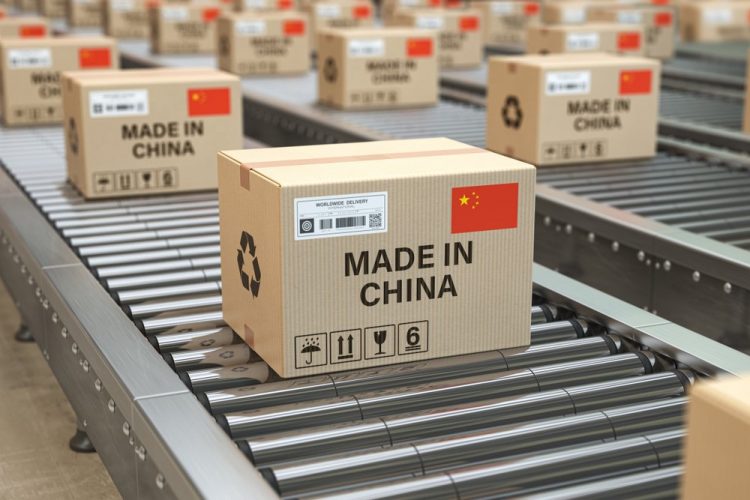Do I Need to Register My Trademark in China if My Goods Are Made in China?

The short answer is that yes, it is a good idea to register your trade mark in China if you manufacture goods in China – even if you don’t sell or promote directly in China.
Recent case law suggests that the use of a trade mark on goods manufactured in China for the purpose of export to other countries may actually constitute infringement of a third party trade mark registered in China. This wasn’t always the case.
There has been a decision in the past year or so coming out of the Supreme People’s Court of the People’s Republic of China, which found that the use of the trademark on goods manufactured in China and bound for offshore markets, may amount to infringement in certain circumstances. Historically, the mere act of manufacturing would not have been found to be ‘use’ of the trade mark in China such that there would be no infringement.
The two factors that that case discussed were where the customers in China can access the products offshore. So whether that be via traveling overseas or via online trades, or if they can purchase the products online. And another factor considered in that case was if other people involved in the relevant trade might become confused. So that might include people in logistics or people involved in the distribution of the goods if they became confused.
Interestingly, it wasn’t necessary in this case for the party alleging infringement, to prove that there had been any confusion, or to prove that Chinese customers had actually been able to access the products via traveling or online purchases. All they had to prove was that these things were possible in theory.
So, this has significantly increased the risk of infringement in China for all of the businesses that manufacture there, which is a lot of businesses because we know China is a major manufacturing hub, perhaps the biggest manufacturing hub in the world. So, it does give rise to the need for businesses to review their arrangements in terms of what goods are manufactured in China, and whether the trade mark is applied to the goods in the course of manufacture.
If it is, then you need to check whether you have a registration in China. You probably know if you do. And if you don’t, then you definitely want to conduct a search of the Chinese trademark register and seek to register your trademark there, if it’s possible.
And of course, if you haven’t commenced manufacturing in China but plan to then you definitely want to do a search. And then attempt to register your trade mark before you commence manufacturing, to protect yourself against infringement proceedings.
Whilst manufacturing in China doesn’t necessarily mean that infringement proceedings will occur, this recent case decision highlights the risk that if there is a conflicting trademark on the register in China, that you may infringe that mark simply through having goods made in China.
It does depend on those factors to do with Chinese customers being able to access the product and the risk of confusion amongst people upstream in the trade. So, it’s not necessarily the case that every product manufactured in China will infringe a third party mark in China, but it certainly gives rise to that risk.
We also have to be mindful China is a first to file country. This essentially means that the first person to file the trade mark application is the owner irrespective of who used it first or whose brand it truly is. This recent case reminds us how important it is to ensure you register your trade mark in China if you are manufacturing there. Otherwise, another party could become aware of your brand through the manufacturing processes, file an application and then ultimately claim you are infringing their trade mark.
How do I register a trade mark in China then?
If China is the only country required, we would need to engage foreign associates. So you need to have a Chinese trade mark attorney to file a trade mark in China. Obviously, as Australian attorneys, we can do that for our clients and we can engage a Chinese associate for our clients. Alternatively, where multiple jurisdictions are required the client might choose to designate China in an international registration under the Madrid Protocol.
In either case, whether via the Madrid Protocol system or where we have engaged Chinese trade marks attorneys on your behalf, communication can come through us as Australian attorneys so that we can review and advise clients accordingly.
Whilst we cannot handle national Chinese applications as Australian trade marks attorneys, the process is fairly straightforward, assuming no objections. They do have very particular rules in China about the specification of goods and services, for example, when filing a national application. The way goods are classified and described in China is not the same as how it’s done in Australia.
So you do need help from the Chinese trade marks attorney to do that correctly. Another major difference between the Australian and China processes is that the deadlines are tight in China. If you receive a report from an examiner indicating there is an issue, you have 15 days to reply. Whereas in Australia, if you get a report, you have 15 months. So you really need to act quickly if there’s an adverse examination report in China. You don’t get very long to respond to it.
In any case, if you do manufacture in China it is important to check your agreements, and also conduct searches and register your trade mark where able, to mitigate the risk of infringing another party’s China trade mark in view of the recent case mentioned.

